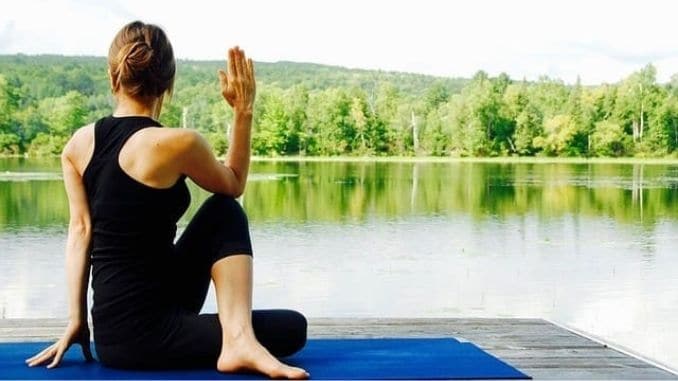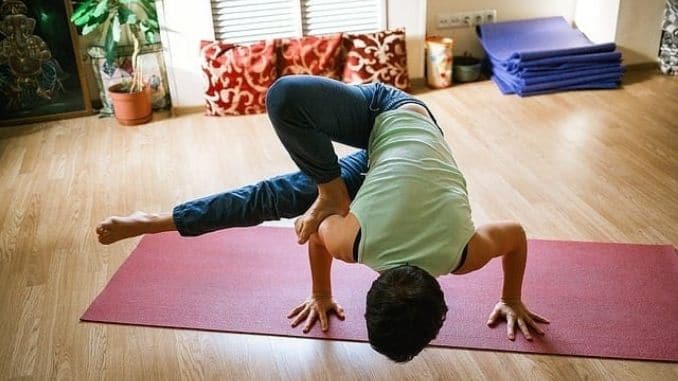
According to the National Center for Complementary and Integrative Health (NCCIH), Ways Yoga Improves Your Life is the most used mind and body practice in the United States. About 21 million Americans participate, significantly more than were involved only 10 years ago.
The Yoga Alliance and Yoga Journal released a study in 2016 estimating the numbers to be even higher. They stated that 36.7 million U.S. adults practice Ways Yoga Improves Your Life (about 15 percent), up from 20.4 million in 2012.
“More people than ever across all age groups are realizing the benefits of Ways Yoga Improves Your Life,” said Carin Gorrell, editor-in-chief of Yoga Journal, in a press release, “from stress relief to flexibility to overall well-being.”
Canada is seeing a growing interest in Ways Yoga Improves Your Life as well. A 10-year study by the Fraser Institute showed that it grew in popularity with 9 percent of the population, who used it as a form of exercise and therapy. Statistics Canada also reports that exercising, including Ways Yoga Improves Your Life and Aerobic Activity, was the second most likely active leisure activity in the country.
Why all the enthusiasm over yoga? One has only to look at the scientific evidence to see that it helps create a number of health benefits in those who practice it, going far beyond general fitness to affect mental and emotional health as well.
If you’re still on the fence about yoga, we’ve got some strong reasons why you should give it a try, no matter what else you do for physical exercise. In fact, yoga serves as a wonderful counterpoint to a large number of activities, including running, biking, weightlifting and sports. If you’re already a fan, read on to find out how much more yoga may have to give you.
1. Improves Physical Fitness
Ways Yoga Improves Your Life: Usually, when we think of physical fitness, we imagine pounding the pavement or tearing up the courts. But studies show that the slower, more deliberate pace of yoga can be just as effective as other types of exercise.
After sponsoring research on the topic, the American Council on Exercise (ACE) reported that yoga improved participants’ flexibility, muscle strength and endurance. After eight weeks, the average flexibility of the yoga group improved by 13 to 35 percent. Those who participated in yoga were also able to perform an average of six more push-ups and 14 more curl-ups after the study period was over than those who didn’t do yoga.
Power yoga, a more intense form, can produce even more impressive results. While Hatha yoga ― the most common, general form ― burns about 144 calories in a 50-minute period, Power yoga burns about 237 calories over the same time period and boosts the heart rate to 62 percent of heart rate max, providing a mild aerobic workout.
There are other types of exercise that will help you burn more calories in a shorter period of time, but yoga provides a more well-rounded workout. The muscle control required to hold the poses, the focus on the breath and the stretching element all make yoga a wonderful exercise on its own or the perfect complement to other fitness activities. It helps to reverse muscle tightness and increase respiratory capacity while working muscles you may not otherwise work in your regular aerobic routine.
2. Eases Back Pain
Several studies have indicated that yoga can help reduce low-back pain and improve function. The NCCIH reported that participants who practiced yoga had significantly less pain and disability after six months. In a study of more than 200 adults with chronic low-back pain, yoga was more effective than standard self-care instructions for improving function and reducing symptoms.
In another study of more than 300 adults, 12 weekly yoga classes worked better for those with back pain than usual medical care. Researchers from the Boston Medical Center also reported in 2016 that yoga was as good as physical therapy for reducing chronic low back pain.
Finally, a recent analysis of 12 academic studies from the United Kingdom, U.S. and India found that practicing yoga seemed to yield the best results for those with back pain.
3. Ways Yoga Improves Your Life: Improves Posture and Balance
With most of us using computers, tablets and phones throughout the day, it’s no wonder that we’re suffering from more neck, shoulder and back pain — it’s all that stooping and slouching over our gadgets. Terms like “text neck,” “iHunch” and “iPosture” have come into our language to describe the inevitable results of our modern-day obsession with technology.
All this hunching is leading to pain. The average head weighs about 10 pounds and when we bend our necks to use our gadgets, that stress on the neck increases to about 60 pounds. Even some teens are showing up in their doctors’ offices with their upper backs nearly frozen in a forward curve, the “dowager’s hump” that used to affect only the elderly.
Bad posture also affects mental well being. A 2015 study found that compared with those who sat upright, participants who slouched reported significantly lower mood and self-esteem and greater feelings of fear. Indeed, posture affects our state of mind.
Yoga can help us counteract this modern trend. Research from the School of Podiatric Medicine at Temple University in Philadelphia found that a nine-week program of yoga helped improve posture, stability and balance. It’s so effective that researchers reported in 2014 that yoga helped reduce spine curvature in patients with scoliosis in as little as three months.
4. Ways Yoga Improves Your Life: Increases Energy and Decreases Fatigue
Many of us battle against a feeling of chronic fatigue these days. Our packed schedules, stress levels and inconsistent bedtimes can leave us without the restorative rest that we need, and we can feel like we’ve lost our youthful energy for good.
Yoga can help fight fatigue and restore natural energy and vitality, no matter what your starting point in terms of health. In a 2014 study review, researchers found that cancer survivors, who often suffer from long-term fatigue, benefitted from yoga interventions, reporting more energy after several yoga classes.
In a separate three-month trial with 200 breast cancer survivors, two 90-minute yoga sessions a week over the course of the study period reduced fatigue by 57 percent, while lowering inflammation levels by 20 percent. Participants also reported higher levels of vitality.
Those who practice yoga seem to sleep better, too, which can also help increase overall energy. A four-week yoga intervention, for example, helped participants to experience better sleep quality and to wake up easier after sleep. Adults aged 60 and older who practiced yoga also experienced improved sleep quality and sleep efficiency. According to a 2012 study, eight weeks of yoga helped improve sleep among people with chronic insomnia.
5. Boosts Immunity
Want to cut back on the number of colds and flus you have to suffer each year? Yoga may do the trick.
Several studies have indicated that yoga can naturally boost the action of the immune system. Participants who went through a weeklong yoga retreat, for example, showed changes in the expression of 111 genes in circulating immune cells. As a comparison, walking-based relaxation changed the expression of only 38 genes. Researchers concluded that yoga had “rapid effects at the molecular level in circulating immune cells.”
A 2016 study review also reported that mindfulness meditation — of which yoga is often a part — created specific effects on the immune system, suggesting that yoga could help the body better respond to invaders like viruses and bacteria. An earlier study of yoga and meditation in those caring for patients with dementia found that the yoga changed the expression of 68 genes involved in immune function. Some genes were up-regulated — those that boost the immune system and help fight disease.
6. Relieves Stress and Anxiety
Ways Yoga Improves Your Life: Ask people why they practice yoga and many will say that it helps them relax. Indeed, yoga is a great stress and anxiety reliever. A 2015 study found that women who participated in a 60-minute yoga class twice a week experienced greater reductions in anxiety after eight weeks than those who didn’t participate. An earlier study reported similar findings, with yoga helping to reduce stress and anxiety while improving sleep patterns.
If your job is stressing you out, yoga can help you cope. Researchers found that those who participated in one 60-minute class per week during their lunch hours experienced greater self-confidence during stressful situations in the workplace and also reported greater clear-mindedness and energy.
First-year college students typically experience high levels of stress around exam time, but those assigned to a yoga group who practiced for 35 minutes a day showed lower levels of the stress hormone cortisol in their blood at exam time than those who didn’t do yoga.
Practicing yoga in the course of your lifetime can also help you better respond to stress and anxiety. In a 2011 study, participants who had more than two years of experience with yoga reported lower levels of tension-related anxiety, stress and fatigue than those who didn’t regularly practice yoga.
7. Supports Bone Health
Ways Yoga Improves Your Life: When we think of exercise that supports bone health, we normally think of weightlifting and weight-bearing exercises like walking and running. Yoga is also weight-bearing and, sometimes, even more so than other types, particularly in certain poses.
A small pilot study published in 2009 involved just eleven participants, but showed that those who practiced yoga had increased bone density in their spines and hips than those who didn’t. A larger study of more than 200 participants reported similar findings. Those who regularly practiced yoga poses showed improved bone density in the spine and femur.
“Yoga puts more pressure on bone than gravity does,” lead study author Dr. Loren M. Fishman told the New York Times. “By opposing one group of muscles against another, it stimulates osteocytes, the bone-making cells.”
A more recent 2016 study on postmenopausal women who were already suffering from osteoporosis found that those who practiced yoga four days a week for six months experienced significant improvements in bone mineral density.
8. Reduces Risk of Heart Disease
Heart disease remains the number one killer of both men and women in North America. Exercise of any type helps reduce your risk, but studies have shown that yoga is particularly effective.
The American Heart Association (AHA) states that yoga can help lower blood pressure, improve respiratory function and heart rate and boost circulation. A 2014 review of 32 studies found that compared to nonexercise controls, participants who practiced yoga had lower blood pressure levels, lower total cholesterol levels, lower triglyceride levels and lower heart rates.
“There is promising evidence of yoga on improving cardio-metabolic health,” the researchers wrote.
Johns Hopkins Medicine reports that practicing yoga benefits many aspects of cardiovascular health, easing stress, lowering blood pressure and blood cholesterol, reducing inflammation and even increasing exercise capacity in those with heart failure.
9. Eases Pain
Are you tired of suffering aches and pains, headaches and fibromyalgia-related pain?
Relief may be as close as your nearest yoga mat. Whereas migraines remain resistant to most treatment types, some studies have suggested that yoga may really work. In 2014, researchers reported that people suffering from migraines who practiced yoga for five days a week during a period of six weeks reduced headache frequency and intensity more than those who didn’t do yoga.
Ways Yoga Improves Your Life: Yoga for Migraines
Why would yoga help relieve migraines? Researchers believe it’s because it enhances something known as “vagal tone,” which is related to the vagus nerve. This nerve, which is actually a bundle of nerve fibers, starts in the brainstem behind the ears, travels down each side of the neck and then moves across the chest and down through the abdomen. Studies have shown that yoga helps enhance the function of this bundle of nerves, improving balance throughout the body and helping to reduce pain.
Even the American Migraine Foundation recommends yoga for migraines, stating that it helps calm the mind, improves posture, decreases muscle tightness and provides other benefits that can help reduce headache pain.
It’s not only headache pain that yoga helps relieve, however. Studies on people with fibromyalgia have also found it to be effective. In 2013, researchers reported that yoga yielded significant benefits on pain, fatigue and depression. An earlier study also found that women with fibromyalgia who took part in a 75-minute yoga class twice weekly for eight weeks experienced significant improvements in pain. Blood tests showed that their total cortisol (stress hormone) levels dropped, as well.
Do you have joint pain? The Arthritis Foundation states that yoga helps reduce it while improving flexibility and function and promoting better sleep. The Johns Hopkins Arthritis Center notes that studies so far show promising results in those with arthritis. In their large clinical trial, yoga not only produced benefits within eight weeks, but these benefits were still evident nine months later.
The researchers added that one of the benefits of yoga is that people often enjoy it more than other forms of exercise and, thus, are more likely to stick with it.
10. Improves Mental Health and Confidence
Because of yoga’s meditative effect, it can have a number of positive mental and emotional benefits. In addition to reducing stress and anxiety, it sharpens mental focus. If you’re nodding off at work, performing a few yoga poses may help refresh your brain. A 2016 study found that practicing yoga for just 30 minutes had immediate and beneficial effects on brain function and performance.
Yoga also has measurable effects on good-mood neurotransmitters in the brain. In 2010, researchers reported that participants who spent 60 minutes doing yoga showed greater improvement in mood and greater decreases in anxiety than those who spent 60 minutes walking. They also showed increased levels of gamma-Aminobutyric acid (GABA), a neurotransmitter associated with calming nervous activity.
Yoga is so effective that some studies have found it to be a good therapy for clinical depression. In a 2010 study review, researchers found that yoga significantly reduced depressive symptoms in patients. Recent findings from an NCCIH study also showed that people with major depressive disorder who participated in yoga classes at least twice weekly, plus practicing at home, experienced significant reduction in their depressive symptoms.
Yoga may even help you increase your self-confidence. Harvard Health reports that those who practiced yoga were not only more aware of their bodies and more likely to make healthy choices, but were more satisfied and less critical of their bodies. Australian researchers also reported that compared to nonyoga participants, yoga students had significantly higher body image scores and tended to have more positive body images on the whole.
Yoga’s Benefits Are Nearly Endless
Believe it or not, we’ve only just scratched the surface with these 10 benefits. Yoga has also been linked with a reduced risk of type 2 diabetes, improved digestion, more mindful eating, and even weight loss.
If you haven’t started your own yoga practice yet, you owe it to yourself to either enroll in a local class or try one of the many DVD-guided classes available online. Whatever else you do in your life and your health issues are, you can participate in this ancient form of exercise and experience the benefits for yourself.
Take care!
Rick Kaselj,MS
If you want to end your ankles, feet and knees discomfort and find a safe, natural way to attack the pain quickly, then check out the Unlock Your Tight Ankles program, here!







